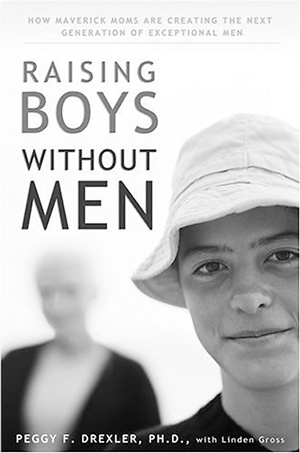Study endorses single moms, lesbian couples but also buffers status quo
In her first book, “Raising Boys Without Men,” Dr. Peggy Drexler addresses the much-debated but little-researched subject of same-sex and single-parent households—specifically those involving mothers who are raising sons—and concludes that lesbian and single moms (or “maverick moms,” as Drexler calls them) are producing the “next generation of exceptional men.”
While this will hardly come as much of a surprise to the estimated 10 million single mothers—an unknown percentage of whom are lesbians—living in the United States as of the last census, “Raising Boys Without Men” marks the first in-depth, scholarly study on the matter and debunks various myths surrounding the welfare of boys reared in all-female households.
Unfortunately, Drexler’s attempt to redeem the mother-son relationship and to vindicate female-headed households also succeeds in ultimately reinforcing many of the same stereotypes she presumably wishes to challenge.
As Drexler notes in her introduction, heterosexual, two-parent families comprise only 23.5% of households in the U.S. as of the last census, making the subject of her book particularly pertinent. Drexler claims that her interest in the mother-son relationship evolved out of her observations of widespread discrimination against unmarried mothers during her years as a mental health worker, much of which she believes to be derived from traditional Freudian assertions about the dangerous effects of “overbearing” and emasculating women on their sons.
In order to discover for herself whether these fears were justified, Drexler set out in 1996 to observe and compare 16 lesbian couples and sixteen heterosexual couples raising sons between the ages of five and nine in the San Francisco Bay area over the course of two years. She then interviewed a total of 60 mothers who were single, either by choice or by circumstance, and likewise compared them to the two-parent, heterosexual families. What she found, in short, is that a live-in male figure is far from vital to a boy’s development of self-worth or his sense of masculinity and, moreover, that sons who are raised by one or two mothers may even be at an advantage over their peers who are being raised in traditional households.
However, although she demonstrates that some of the boys she observed seemed endowed with a particularly unique ability to rise above peer pressure, as in the case of Ethan who “isn’t very much affected by what people around him think,” Drexler spends most of the book focusing disproportionately on boys who are representative of the “all-American” “jock” image in order to prove that these mothers were raising well-adjusted, “normal” sons.
Drexler seems particularly preoccupied with proving that her interviewees were not “sissies” or “mama’s boys,” two terms to which she attaches a decidedly negative connotation throughout the book. When she talks about TJ, for instance, who loved to have his fingernails painted, she seems intent on distancing the act from any association with femininity, describing the colors he chose as “fire engine red” and “Godzilla” green. In so doing, Drexler undermines one of the greatest strengths of the non-traditional family – its ability to create new meanings and possibilities rather than merely attempting to conform to old ones.
While Drexler’s slew of positive findings about boys who are raised in lesbian and single-mother households will no doubt prove advantageous for “maverick moms” in months and years to come, this book misses the mark by suggesting that only those boys who embody the traditional vision of masculinity—athletic, heterosexual, sports-obsessed and generally “manly”—can be held up as proof of their non-traditional mothers’ success.
gaycitynews.com


































